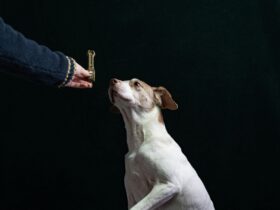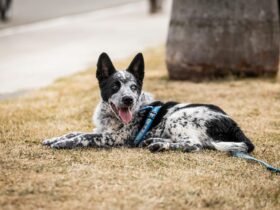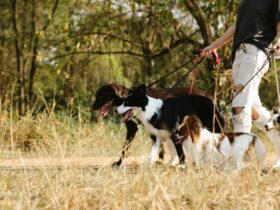Housebreaking a dog is one of the first and most important tasks for new pet owners. Teaching your dog to potty outside requires patience, consistency, and a clear understanding of the process. Whether you’re working with a puppy or an adult dog, this comprehensive guide will help you navigate the steps to successful housebreaking and ensure your dog learns to potty outside reliably.
Understanding the Basics
Before diving into the training process, it’s crucial to understand a few key concepts:
- Why Consistency Matters: Dogs thrive on routine. Consistent schedules and clear expectations help them understand when and where they should go potty.
- The Role of Crate Training: A crate can be a valuable tool in housebreaking, as it helps manage your dog’s environment and prevents accidents.
- Importance of Positive Reinforcement: Rewarding your dog for good behavior is essential in reinforcing the habit of going potty outside.
Preparing for Training
1. Create a Routine
Establish a consistent schedule for feeding, potty breaks, and playtime. Puppies typically need to go potty after eating, drinking, playing, or waking up from a nap. Adult dogs also benefit from a regular schedule:
- Feeding Schedule: Feed your dog at the same times each day to regulate their potty schedule.
- Potty Breaks: Take your dog outside frequently, especially after meals, naps, and play sessions.
2. Designate a Potty Area
Choose a specific spot outside where you want your dog to go potty. Taking them to the same area helps them associate that spot with potty time.
- Consistency: Always take your dog to the same area to reinforce the behavior.
- Encouragement: Use a specific command or phrase, such as “go potty,” when you take your dog to the designated spot.
3. Prepare Your Dog’s Space
Create a comfortable and secure environment inside your home:
- Crate Training: Use a crate to manage your dog’s environment and prevent accidents. Make sure the crate is the right size—big enough for your dog to stand up, turn around, and lie down comfortably, but not so large that they can use one corner as a bathroom.
- Safe Space: When you can’t supervise directly, confine your dog to a safe area where accidents are easier to manage.
The Training Process
1. Supervise and Confine
- Direct Supervision: Keep a close eye on your dog when they are indoors. Watch for signs that they need to go potty, such as sniffing, circling, or whining.
- Use a Leash: If you can’t supervise directly, use a leash to keep your dog close to you and prevent accidents.
- Confine When Unsupervised: When you can’t supervise, confine your dog to their crate or a designated area.
2. Take Frequent Potty Breaks
- Regular Intervals: Take your dog outside every 1 to 2 hours, and immediately after eating, drinking, playing, or waking up.
- Leash Training: Use a leash to guide your dog to the designated potty area. This prevents distractions and helps them understand where they should go.
3. Reward and Praise
- Immediate Rewards: As soon as your dog goes potty outside, reward them with a treat and praise. This positive reinforcement helps them associate going potty outside with something enjoyable.
- Verbal Praise: Use a cheerful and encouraging tone when praising your dog. Words like “Good potty!” or “Well done!” help reinforce the behavior.
4. Monitor and Adjust
- Observe Behavior: Pay attention to your dog’s behavior and adjust the training as needed. If they are having frequent accidents, consider increasing the frequency of potty breaks or adjusting their feeding schedule.
- Track Progress: Keep a record of your dog’s potty schedule and any accidents. This can help you identify patterns and make necessary adjustments.
Handling Accidents
1. Stay Calm
- Avoid Punishment: Never punish your dog for accidents. Punishment can create fear and anxiety, making housebreaking more difficult. Instead, focus on reinforcing positive behavior.
- Clean Thoroughly: Use an enzymatic cleaner to remove all traces of urine or feces from the area. This prevents your dog from being attracted to the same spot for future potty breaks.
2. Address Medical Issues
- Health Check: If your dog is having frequent accidents or seems to be struggling with housebreaking, consult your veterinarian. Medical issues, such as urinary tract infections or gastrointestinal problems, could be contributing to the problem.
Common Mistakes to Avoid
1. Inconsistent Schedule
- Stick to a Routine: Inconsistency in feeding and potty breaks can confuse your dog and make housebreaking more challenging. Maintain a regular schedule to help your dog learn when and where to go potty.
2. Ignoring Signs
- Watch for Cues: Learn to recognize the signs that your dog needs to go outside. Ignoring these signs can lead to accidents and setbacks in training.
3. Overuse of Crate
- Avoid Overuse: While the crate is a useful tool, don’t rely on it too heavily. Dogs need opportunities to exercise and socialize. Balance crate time with playtime and potty breaks.
4. Lack of Supervision
- Monitor Closely: Supervise your dog closely, especially during the early stages of training. Inadequate supervision can lead to accidents and hinder progress.
Tips for Success
1. Be Patient
- Take Your Time: Housebreaking is a process that takes time and patience. Don’t expect your dog to learn overnight. Celebrate small victories and stay consistent with training.
2. Use Clear Commands
- Consistency in Commands: Use the same command or phrase for potty time each time you take your dog outside. This helps them associate the command with the desired behavior.
3. Encourage Outdoor Play
- Make Potty Time Fun: Turn potty time into an enjoyable experience by incorporating play and interaction. This helps your dog look forward to going outside and makes the process more enjoyable.
4. Seek Professional Help if Needed
- Consult a Trainer: If you’re struggling with housebreaking or facing specific challenges, consider consulting a professional dog trainer or behaviorist. They can provide personalized guidance and support.
Conclusion
Teaching your dog to potty outside is a crucial aspect of their training and helps create a harmonious living environment. By following these steps and maintaining a consistent routine, you can successfully housebreak your dog and foster positive behaviors. Remember, patience and positive reinforcement are key to achieving long-term success. Enjoy the process of training and celebrate the progress along the way!
Happy housebreaking!











Leave a Reply